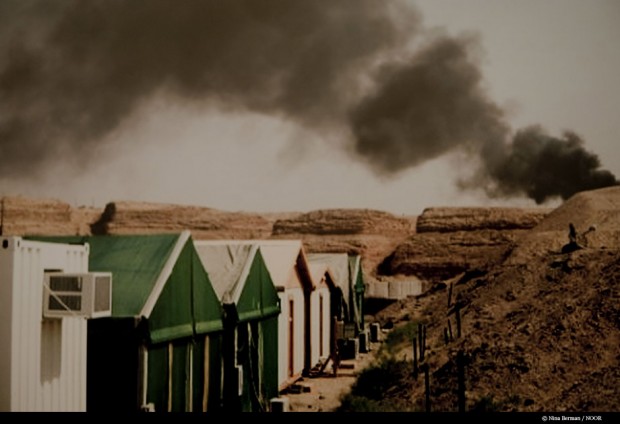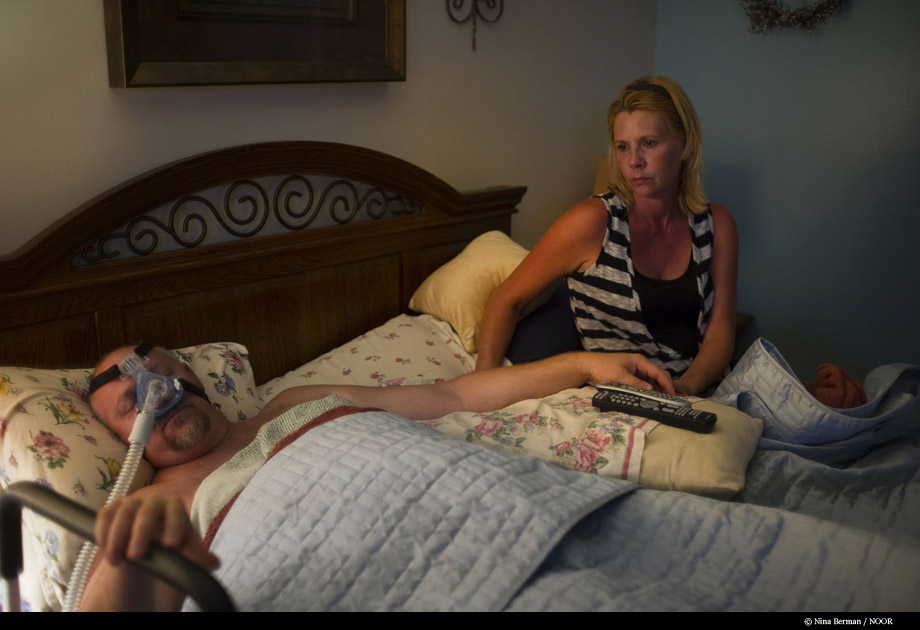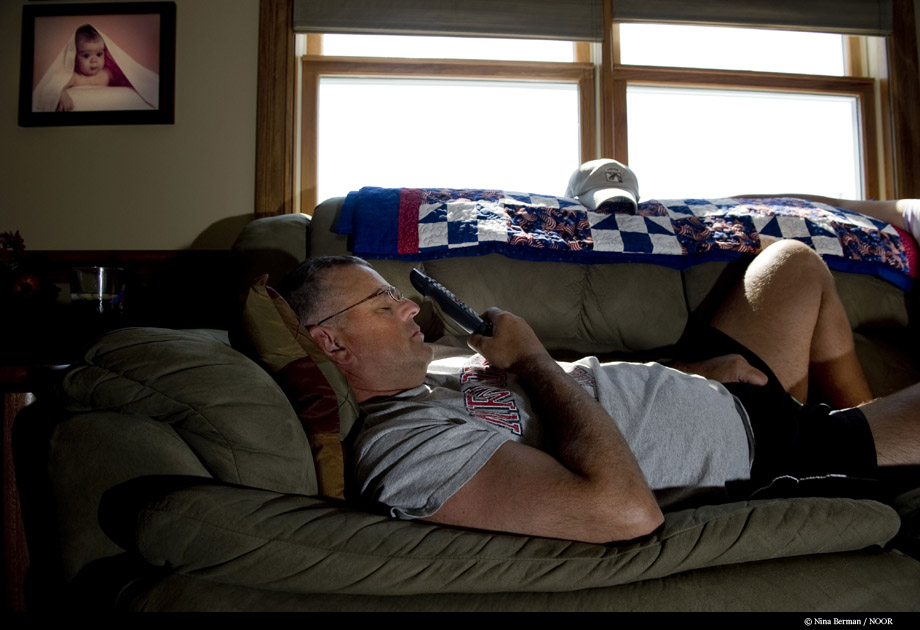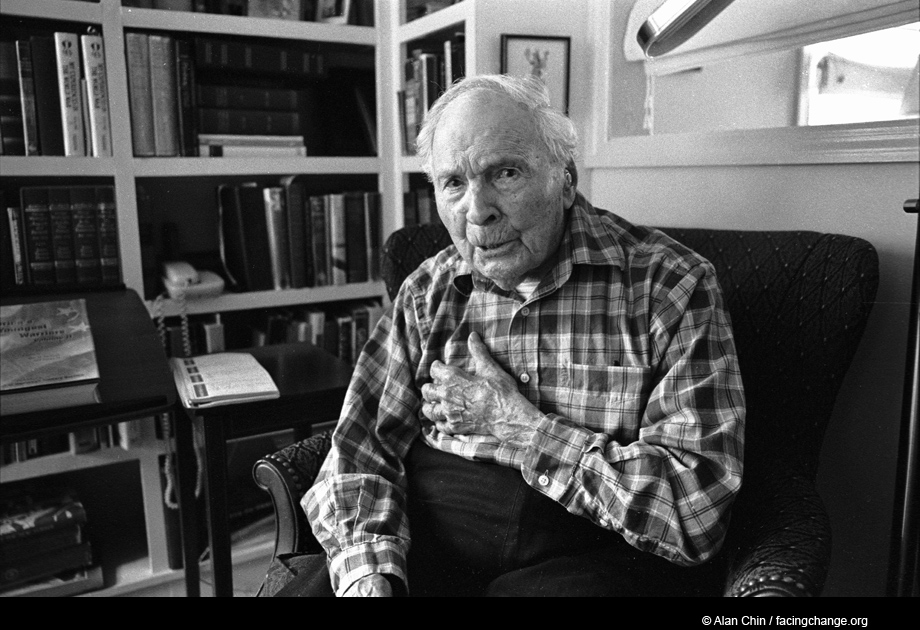Notes
Nina Berman: Poisoned While Deployed
Tim Wymore, deployed to Balad, Iraq from 2004-2005, at home with wife Shanna Wymore. Tim suffers from a range of diseases including brain lesions and hypertension which he attributes to his exposure to the Burn Pit at Balad.
Veterans Day was once known as Armistice Day, the anniversary of when the First World War ended at 11 o’clock in the morning on the eleventh day of the eleventh month: November 11, 1918. Millions were dead and wounded, empires erased off the map. A whole way of life and thinking died in those years on the Western Front, and for generations after, red poppies were worn in lapels, in remembrance of the fatal-seeming flowers blossoming in Flanders Fields. After the greater horrors of the Second World War, the name of the holiday was changed to include veterans of all wars.
 Photograph of the Balad Burn Pit taken by Tim Wymore when he was one of the soldiers assigned to tend it.
Photograph of the Balad Burn Pit taken by Tim Wymore when he was one of the soldiers assigned to tend it.
Almost a hundred years later, American veterans returning from Iraq suffer from a host of ailments caused by toxic exposure to the open air burn pits on the big military bases. Without masks or other safety equipment, all kinds of trash including plastics, chemicals, and even body parts were thrown into these garbage disposal fires fueled by jet fuel. Managed by Halliburton subsidiary Kellogg Brown & Root (KBR), profit for a quick fix was made at the expense of health.
1st Sgt. William Krawczyk at home in Erie, Pennsylvania. Krawczyk was stationed at Balad, Iraq where he became sick with unexplained cysts. Since returning, he has had an auto-immune disease, chronic fatigue, weakening of his kidneys and liver, secondary infections, and extreme hypertension. He lost his job as a result, and attributes his illnesses to exposure at the Balad burn pit. The Army refuses to acknowledge his permanent disability. Prior to deploying, he ran half a dozen miles a day and was in perfect health.
Nina Berman has been tracking the struggles these veterans face. Military doctors and hospitals are reluctant to diagnose their illnesses as being related to toxic exposure, and instead suggest that PTSD or other psychological factors may be the cause. But it’s hard to see how PTSD by itself could have such devastating physical consequences. As Sgt. Krawczyk’s wife Paula said:
“It would have been so much easier for him to be shot, because it’s a black and white issue, it’s treatable and everything. So, we’re in a military loop.”
Please see Nina’s multi-media presentations on veterans Tim Wymore and William Krawczyk at:
Poisoned While Deployed – Tim Wymore from Nina Berman on Vimeo.
and
Poisoned While Deployed – William Krawczyk from Nina Berman on Vimeo.
There is just one American veteran of the First World War still alive, Frank Woodruff Buckles, who lives in West Virginia, 109 years old. He drove an ambulance behind the front and escorted German prisoners-of-war back to their homes after the Armistice. He spent the Second World War in a Japanese prison camp in the Philippines.
When I interviewed him in 2007, I asked him what he thought of the war in Iraq. He said:
“I think we should have skipped that one. When his father — the President’s father was in there, the oil companies that George Bush Sr. was connected with — it seemed to me that he was too much interested in the oil business. He should have stayed at home.”
–Alan Chin
PHOTOGRAPHS and VIDEO by NINA BERMAN / NOOR and ALAN CHIN / facingchange.org
post updated 19:38 EST 11/11/10 to include photograph of Frank Buckles





Reactions
Comments Powered by Disqus